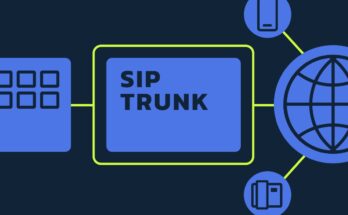Microsoft Dynamics 365 has emerged as a powerful suite of business applications that integrate various functions, enabling organizations to streamline their processes and enhance overall efficiency. However, the success of a Dynamics 365 implementation heavily relies on the seamless migration of existing data. Data migration is a critical step that ensures a smooth transition to the new system while preserving the integrity and accuracy of information. This article explores effective data migration strategies that can contribute to the success of Microsoft Dynamics 365 implementation projects.
Understanding Dynamics 365 Implementation
Microsoft Dynamics 365 is a cloud-based solution that integrates Customer Relationship Management (CRM) and Enterprise Resource Planning (ERP) functionalities. Organizations can tailor the platform to meet their specific needs by choosing from various modules, such as Sales, Customer Service, Finance, and Operations. A successful implementation involves not only setting up the software but also ensuring the smooth transfer of historical and current data from legacy systems to Dynamics 365.
Challenges in Data Migration
Data migration is a complex process that comes with its own set of challenges. These challenges include data quality issues, compatibility problems between legacy systems and Dynamics 365, data mapping complexities, and ensuring data security during migration. Therefore, it is crucial to adopt effective strategies that mitigate these challenges and pave the way for a successful implementation.
Data Migration Strategies
Thorough Data Assessment: Before initiating the migration process, conduct a comprehensive assessment of your existing data. Identify redundant, outdated, and trivial data that can be purged. This not only reduces the volume of data to be migrated but also improves overall data quality.
Data Mapping and Transformation: Establish a clear mapping of data fields between the legacy system and Dynamics 365. This includes mapping data formats, values, and relationships. Implement data transformation rules to ensure data consistency and accuracy post-migration.
Data Cleansing and Standardization: Cleanse and standardize data before migration. This involves correcting inaccuracies, eliminating duplicates, and enforcing consistent data formats. This step is vital to prevent the migration of flawed data into the new system.
Incremental Migration: Instead of migrating all data in one go, consider an incremental approach. Start with essential data sets and gradually migrate additional data. This reduces the risk of overwhelming the system and allows for better testing and validation.
Testing and Validation: Rigorously test the migration process in a controlled environment before the actual implementation. Verify the accuracy of migrated data and resolve any discrepancies. Regularly validate data integrity throughout the project lifecycle.
Data Security: Safeguard sensitive information during migration by implementing encryption and secure data transfer protocols. Ensure compliance with relevant data protection regulations, such as GDPR, HIPAA, or industry-specific standards.
User Training: Train end-users on how to effectively use Dynamics 365 and interpret migrated data. Providing adequate training ensures a smoother transition and minimizes disruptions in daily operations.
Backup and Rollback Plans: Develop robust backup and rollback strategies in case of unexpected issues during migration. Having contingency plans reduces downtime and ensures business continuity.
Microsoft Dynamics 365: A Game-Changer
Microsoft Dynamics 365 brings a multitude of benefits to organizations, including streamlined processes, improved customer engagement, data-driven insights, and scalability. Its cloud-based architecture facilitates remote access, collaboration, and real-time updates, enabling businesses to stay agile in today’s competitive landscape.
Change Management and Stakeholder Engagement: A successful data migration process involves not just technical aspects but also effective change management and stakeholder engagement. Communicate the migration plan, benefits, and potential disruptions to all relevant stakeholders well in advance. Address concerns, gather feedback, and involve key personnel from different departments. By creating a sense of ownership and inclusivity, you can foster a smoother transition and reduce resistance to change.
ImplementingMicrosoft Dynamics 365 is not just about technology; it’s about transforming the way the organization operates. Engaged stakeholders are more likely to provide insights into data nuances, ensure data accuracy, and embrace the new system, leading to a more successful implementation overall.
Data Governance and Documentation: Establish a robust data governance framework and maintain comprehensive documentation throughout the data migration process. Clearly define roles and responsibilities for data management, quality control, and validation. Document data mapping, transformation rules, and any deviations encountered during migration.
A well-defined data governance strategy ensures that data remains accurate, consistent, and up-to-date not only during migration but also in the post-implementation phase. Comprehensive documentation serves as a reference for future troubleshooting, audits, and system enhancements. It also aids in maintaining transparency, allowing stakeholders to track the progress and compliance of the data migration process effectively.
Conclusion
A successful Microsoft Dynamics 365 implementation hinges on effective data migration strategies. By assessing data comprehensively, mapping and transforming it accurately, and testing meticulously, organizations can ensure a seamless transition. Embracing best practices such as data cleansing, incremental migration, and robust security measures further enhances the chances of success. As organizations harness the capabilities of Dynamics 365, they can optimize their operations, elevate customer experiences, and position themselves for sustained growth in an increasingly digital world.




